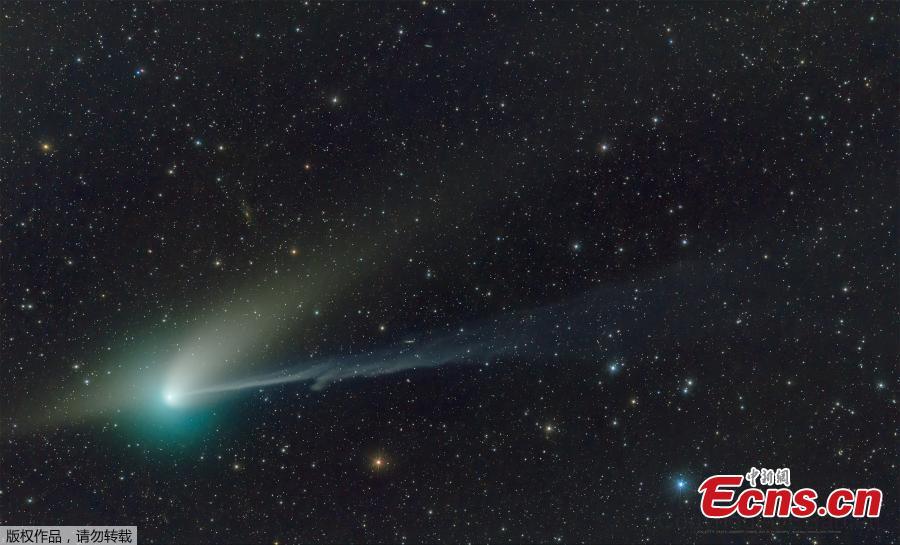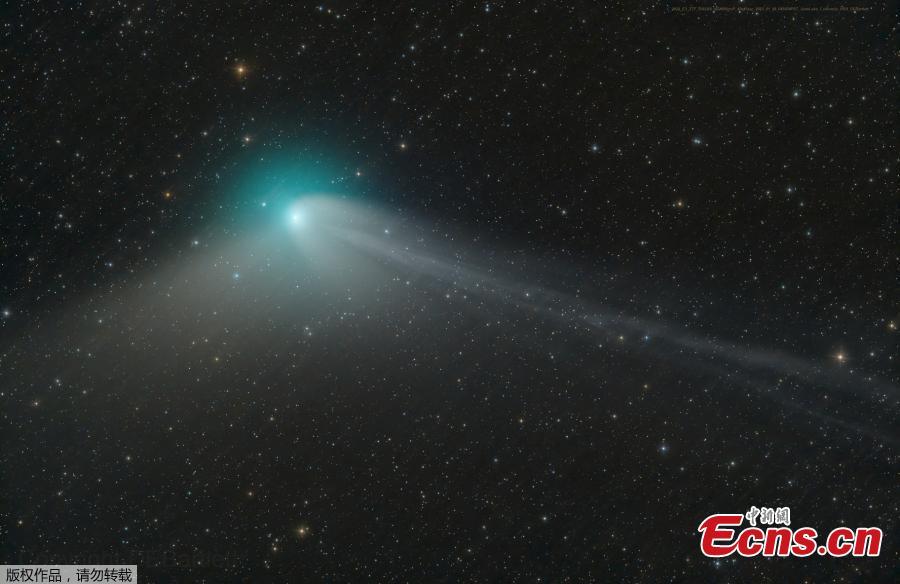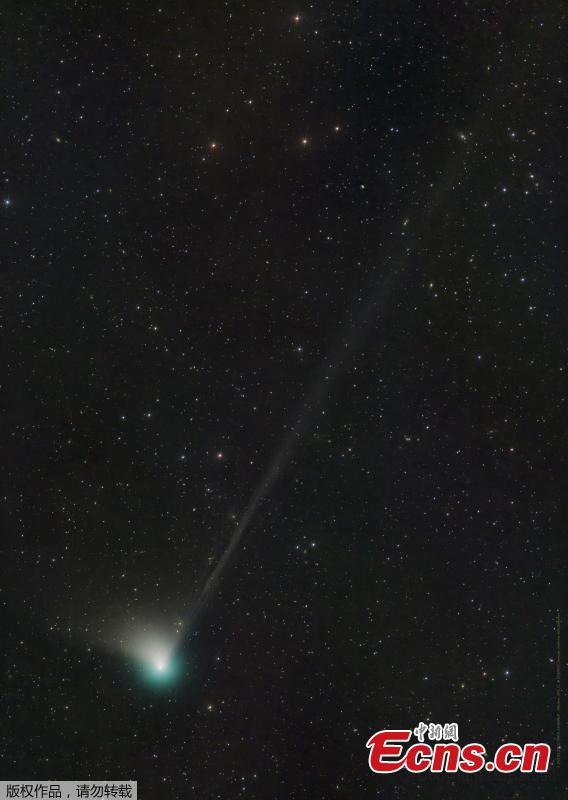
Photo shows the C/2022 E3 comet with a distinctive green hue, Jan. 21, 2023. (Photo/Agencies)
The comet will pass close to the earth this week in what will be a major event for star-gazers across the planet. It was discovered last year by scientists at the Zwicky Transient Facility.
The orbital period of C/2022 E3 is 50,000 years according to NASA's Jet Propulsion Laboratory (NASA JPL), meaning the last time it came so close to the Earth or the sun our planet was in the midst of the last glacial period or "ice age".

Photo shows the C/2022 E3 comet with a distinctive green hue, Jan. 21, 2023. (Photo/Agencies)
The comet will pass close to the earth this week in what will be a major event for star-gazers across the planet. It was discovered last year by scientists at the Zwicky Transient Facility.
The orbital period of C/2022 E3 is 50,000 years according to NASA's Jet Propulsion Laboratory (NASA JPL), meaning the last time it came so close to the Earth or the sun our planet was in the midst of the last glacial period or "ice age".

Photo shows the C/2022 E3 comet with a distinctive green hue, Jan. 21, 2023. (Photo/Agencies)
The comet will pass close to the earth this week in what will be a major event for star-gazers across the planet. It was discovered last year by scientists at the Zwicky Transient Facility.
The orbital period of C/2022 E3 is 50,000 years according to NASA's Jet Propulsion Laboratory (NASA JPL), meaning the last time it came so close to the Earth or the sun our planet was in the midst of the last glacial period or "ice age".























 京公网安备 11010202009201号
京公网安备 11010202009201号
